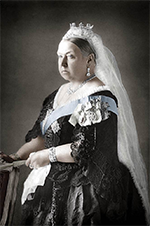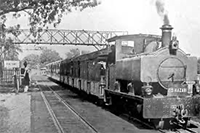The British Raj
Part 2: Many Winters of Discontent British India didn't equal all of India, however. The British Raj personally controlled about two-thirds of what is now Bangladesh, India, and Pakistan; local princes controlled the rest, although they often felt great pressure from the Raj to adopt or adapt to certain policies. One policy that went by the wayside right away was one particularly embraced by Governor-General Lord Dalhousie. Under the "doctrine of lapse," the common practice was for a landowner to pass his land on to his heir(s). Dalhousie's "doctrine of lapse" stipulated that if a landowner who died without an heir, then the EIC became the heir and took over the land. He made it even more effective by later preventing an heirless landowner from naming one. As a result, the EIC gained much more land and income than it otherwise would have. The new governmental structure eliminated the doctrine of lapse. Also, in the aftermath of the Sepoy Rebellion, the new government instituted an income tax, to pay off the debts incurred in fighting off the rebellion. One thing that helped to stop the rebellion from succeeding was that very few rich Indians had joined in; after the rebellion, the poor couldn't afford to pay much of any sort of tax, and so it fell to the very rich who had avoided getting involved to help pay off the debt. 
The Government of the U.K., including Queen Victoria, adopted a policy of paternalism with regard to India. As was the case in other colonial lands, the idea of "bringing civilization to the natives" drove much policy-making in the British Raj. (Another phrase bandied about during Victoria's reign came from the author Rudyard Kipling, who asserted that it was the job of the British to "take up the white man's burden" in "educating" and "civilizing" people who didn't live in the U.K.) This kind of thinking also drove actions put forward by the queen and her government. One prime example was the civil service examination. Queen Victoria had promised racial equality of opportunity for those applying for civil service jobs. However, in order to take such an examination, a person had to travel to London to take the exam. 
The people of India certainly benefited from U.K. scientific knowledge and inventions, such as vaccines and other medical treatments and a myriad of Industrial Revolution technologies, and certainly appreciated the miles and miles and miles of railway lines that the British Raj ordered laid down to criss-cross the subcontinent (from 200 miles in 1858 to 35,000 miles in 1914). However, the people of India also chafed under the rule of someone else, as they had under the Mughal emperors for many a decade, and longed to be their own masters again. The Raj was also fond of pitting certain Indian interests against one another, in order to maintain a stance of being above it all or to diminish the influence of one particular part of society. India had for a very long time been a country of multiple religions. The two most prevalent were Hinduism and Islam, each of which distrusted the other; conversely, many in both of those religions came to distrust the Christian missionaries that had been sent by various European powers for several decades. In 1905, the Raj divided the large state of Bengal into two sections, designated Hindu and Islam. It was only after strong and sometimes violent protests that Bengali residents succeeded in removing this division. 
Despite the simmering discontent, the occurrence of a world war stirred in more than 1.3 million Indian soldiers the desire to fight for king and country. Indian deaths in World War I exceeded 40,000. The same was true in World War II, as India again made huge contributions to the U.K. war effort. The number of Indian soldiers serving and killed was about twice that of World War I. Next page > Their Own Masters > Page 1, 2, 3
|
|
Social Studies for Kids
copyright 2002–2023
David White




